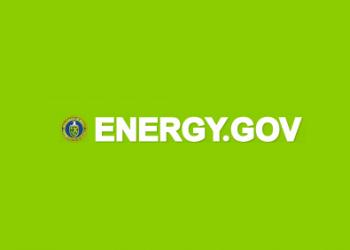The U.S. Department of Energy made an announcement today, the 5th of February, that it is investing $125.5 million in support of further improvements in solar power and other renewable energy technologies.
This investment will, more specifically, go towards improving the reliability of the nation’s grid, creating a more robust American manufacturing environment, and helping to further reduce the cost of solar.
 Energy.gov
Energy.gov“We’re excited about these new funding opportunities for renewable power, transportation, energy efficiency, and manufacturing. We look forward to working with the National Labs and private sector partners to advance clean, affordable, and reliable energy for American families and businesses.” – Daniel R. Simmons – Assistant Secretary of Energy Efficiency and Renewable Energy.
The key objectives include:
- Photovoltaics (PV) Hardware Research – $15 million for 8-12 projects that aim to extend PV system lifetimes and reduce hardware costs of solar systems made of silicon solar cells, as well as new technologies like thin-film, tandem, and perovskite solar cells.
- Integrated Thermal Energy Storage and Brayton Cycle Equipment Demonstration (Integrated TESTBED) – $39 million for 1-2 projects that will develop a test site to accelerate the commercialization of supercritical carbon dioxide power cycles, a key component of low-cost concentrating solar power plants.
- Solar Energy Evolution and Diffusion Studies 3 (SEEDS 3) – $10 million for 6-8 projects that will examine how information flows to stakeholders to enable more efficient decision-making about solar and other emerging technologies, such as energy storage.
- Innovations in Manufacturing: Hardware Incubator – $14 million for 7-9 projects that will advance innovative product ideas from a prototype to a pre-commercial stage, with an aim for products that support a strong U.S. solar manufacturing sector and supply chain.
- Systems Integration – $30 million for 7-11 projects that will develop resilient community microgrids to maintain power during and restore power after man-made or natural disasters, improve cybersecurity for PV inverters and power systems, and develop advanced hybrid plants that operate collaboratively with other resources for improved reliability and resilience.
- Solar and Agriculture: System Design, Value Frameworks, and Impacts Analysis – $6.5 million for 4-6 projects that will advance the technologies, research, and practices necessary for farmers, ranchers, and other agricultural enterprises to co-locate solar and agriculture.
- Artificial Intelligence Applications in Solar Energy with Emphasis on Machine Learning – $6 million for 8-12 projects that encourage partnerships between experts in AI and solar industry stakeholders to develop disruptive solutions across the value chain of the solar industry.
- Small Innovative Projects in Solar (SIPS): PV and Concentrated Solar Power (CSP) – $5 million for 15-20 projects that advance innovative and novel ideas in PV and CSP that can produce significant results within the first year of performance.
While an initial response to this announcement should be positive, it’s also worth noting that the current administration has not exactly been the most supportive of the renewable energy industry. In fact, they are big supporters of trying to bring back coal (which won’t happen) and being generally favorable to the fossil fuel industry. It can also be said that $125 million is a very small amount considering the total yearly available budget.
The big picture is that the solar industry is ripe for massive expansion as it is right now. Prices are low and the technology is ready to go. Sure, further improvements will only encourage expansion of renewable energy projects, but what is really needed is promotion. Many simply are still not aware of how much it makes sense to go solar right now.
Here’s to further support for the solar industry, and more importantly, the implementation of solar projects right now!
